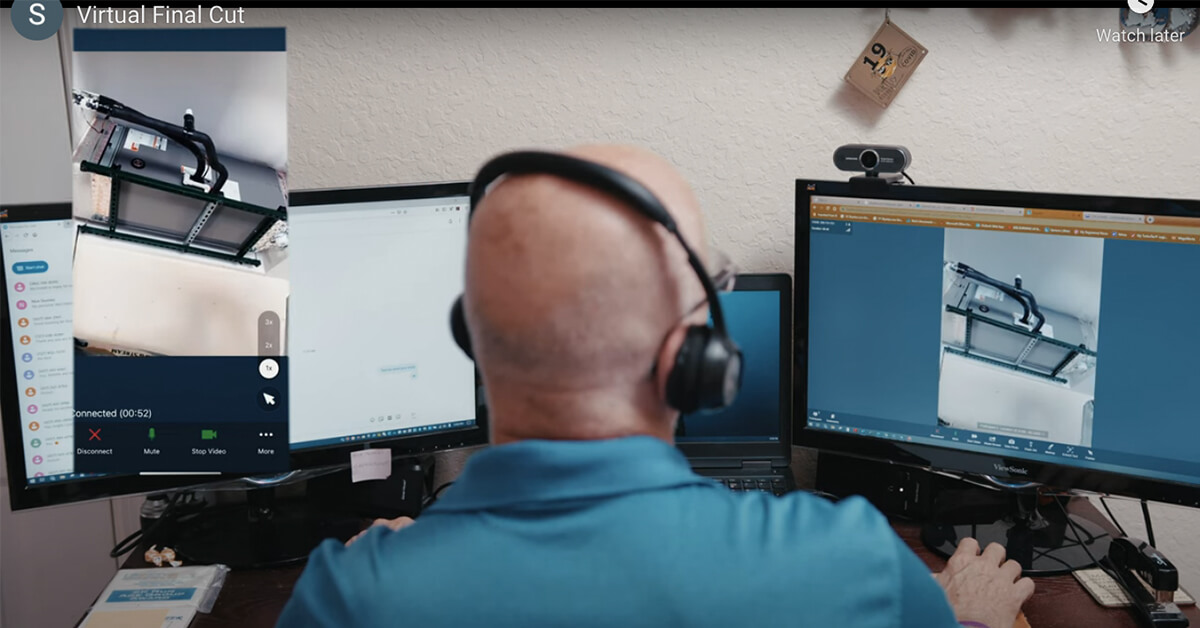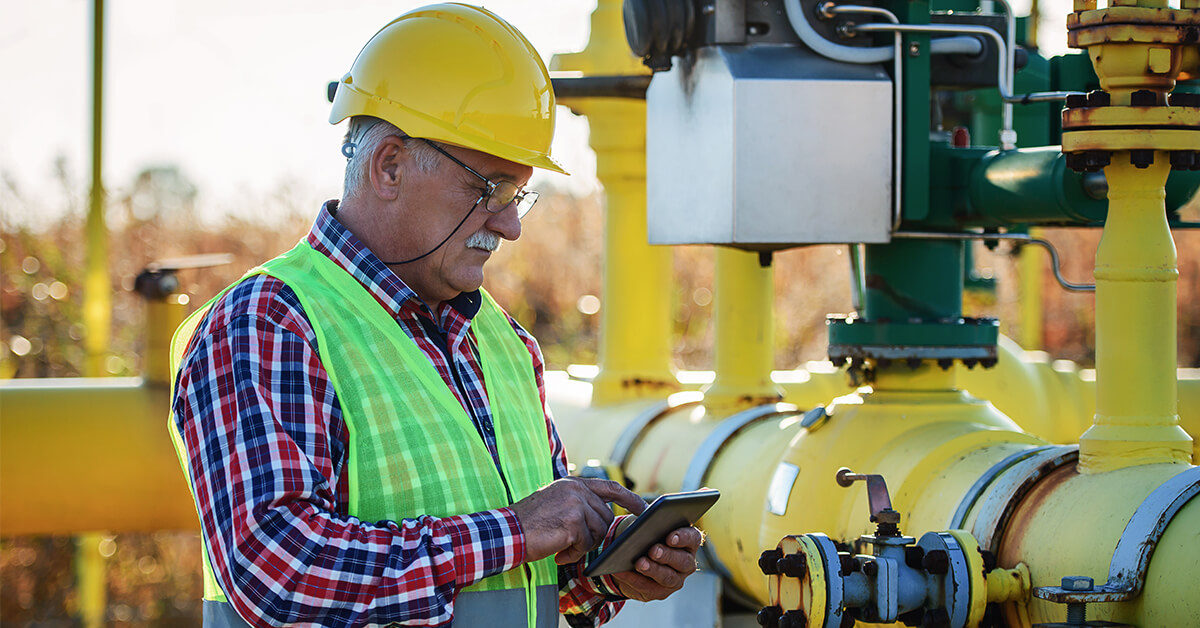Do You Have the Right Tools to Conduct Thorough Remote Inspections?
In the United States, it’s fairly rare for an entire building to fall down on its own. But that’s exactly what happened in Surfside, Florida, when the Champlain Towers South condo tower collapsed, killing 98 people.
The likely cause? Major concrete and rebar corrosion left unattended for nearly two years.
The Surfside condo collapse was a wake-up call for local government officials worried about the structural integrity of other residential buildings. However, inspectors face difficulties meeting the rising demand for property inspections.
In this article, we’ll take a look at how the Surfside condo collapse has impacted property inspectors already struggling with a skilled labor shortage. Then, we’ll explain how inspectors can use remote video tech like Blitzz to conduct efficient inspections with care.
Local Officials Demand Faster and More Frequent Property Inspections
The Surfside condo collapse resulted in a flurry of media attention and political pressure to take action.
In Miami-Dade County, buildings that are at least 40 years old must be recertified in order to confirm structural integrity and building safety. The Champlain Towers South condo tower was in the middle of that process when it gave way.
How long does this recertification process typically take? Once the city or county sends notice of an upcoming mandatory inspection…
- Property owners have 90 days to complete a building inspection and submit a report.
- Officials may take up to two weeks to process the inspection report.
- Major safety issues must be repaired within 180 days, complete with written verification.
With these variables at play, the recertification process can last over nine months. That’s concerning for buildings with poor structural integrity – slow progress can create a serious safety hazard.
In order to prevent other aging buildings from collapsing, local Surfside officials decided to expedite property inspections for buildings constructed in the same time period as the collapsed tower.
Nationwide, delays have plagued the property inspection industry for years. But Surfside couldn’t afford the devastation of another building collapse, especially since the Champlain Towers developer built other buildings in the area.
Local officials also picked up the pace for inspections under county jurisdiction. A 30-day audit identified 469 multifamily and condo properties – including 24 buildings four stories or higher – that had failed to either complete their 40-year recertification or address problems identified during the recertification process. In response, county officials rushed inspections for the 24 highrises. They also sent inspectors to each of the more than 500 buildings seeking recertification.
For inspectors used to the standard workday pacing, this rush of inspections will add more jobs to the immediate pipeline. There’s also the prospect of more frequent jobs going forward: a recent grand jury report urged Miami-Dade County to require building recertification about four times more often than currently mandated.
It’s clear that the inspection business isn’t as usual. When a full recertification process can take over nine months, inspectors can’t approach this surging demand with the same tools and processes that have delayed inspections for years. To tackle this spike, they need a plan for the present and the future.
A well-designed strategy requires modernized solutions that can pinpoint and cut out the inefficiencies holding back their work. Industry-specific tech can help. With the right digital tools, inspectors can maximize every minute of their day to make steady progress on inspections, no matter the demand.
With A Skilled Labor Shortage, Experienced Inspectors Struggle to Meet Demand
Meeting demand can be a challenge in any year, but right now, property inspectors are suffering from a skilled labor shortage. That’s bad news at a time when local governments need experienced inspectors on hand to ensure that residential structures are safe and structurally sound.
What’s at the heart of this labor shortage? The main factor is an aging workforce. In the construction industry, the median age is 43 years old, and nearly 40 percent of all workers are between 45 and 64. Inspectors in this age range have been working for several decades – and they’re getting ready to retire.
Additionally, the inspector workforce is projected to lose jobs as well. The Bureau of Labor Statistics expects the industry to lose 3,800 jobs in the next 10 years.
With fewer skilled inspectors available and job attrition industry-wide, the experienced inspectors that remain have more pressure to meet the rising demand in property inspections. And when inspectors feel pressured to power through a workload spike, they may choose to cut corners in order to stay on schedule. While this may help inspectors maintain the pace of inspections, it defeats their original purpose: to thoroughly check for safety concerns.
Ensuring building safety should be a top priority for every inspector. But with a shrinking pool of skilled workers handling a rising amount of inspections, inspectors shouldn’t have to choose between doing their job thoroughly and doing it quickly.
The tried-and-true approach won’t cut it, though: a changing workforce needs new ways to avoid both structural failures without causing inspection delays. With the right digital tech in their toolbox, inspectors can work with both speed and care.
Remote Inspections Balance Efficiency and Care
When inspectors use remote video tech to conduct their inspections, they can do their work more efficiently to meet rising demand.
Remote inspections are conducted using a handheld device. Someone already on-site – perhaps a landlord or building manager – holds up their device camera to show the inspector each piece of equipment. The result is an entirely video-based inspection.
Remote inspections are more efficient than traditional inspections because they’re able to cut out commute time. When inspectors aren’t spending time traveling from site to site, they can do more inspections each day and work more efficiently overall.
Remote video tech doesn’t just make for faster work, though: it gives skilled inspectors the time they need to do their job with care.
With traditional inspections, spending time commuting from site to site adds pressure on inspectors to quickly wrap up each job. With remote inspections, that pressure is minimal. Because there’s no time spent commuting, inspectors can focus on the task at hand and ensure that every box is checked.
Blitzz’s Remote Video Tech Can Help Inspectors Meet Demand the Right Way
With rising pressure to meet inspection demand, inspectors need tools to conduct thorough inspections efficiently to maintain property safety.
Blitzz’s remote video tech gives inspectors the tools they need to conduct high-quality inspections with speed and accuracy. With industry-specific features that don’t require an app to use (unlike other video conferencing tools), Blitzz can be an all-inclusive solution for your remote inspection needs. Interested in trying it out? Get started today.




